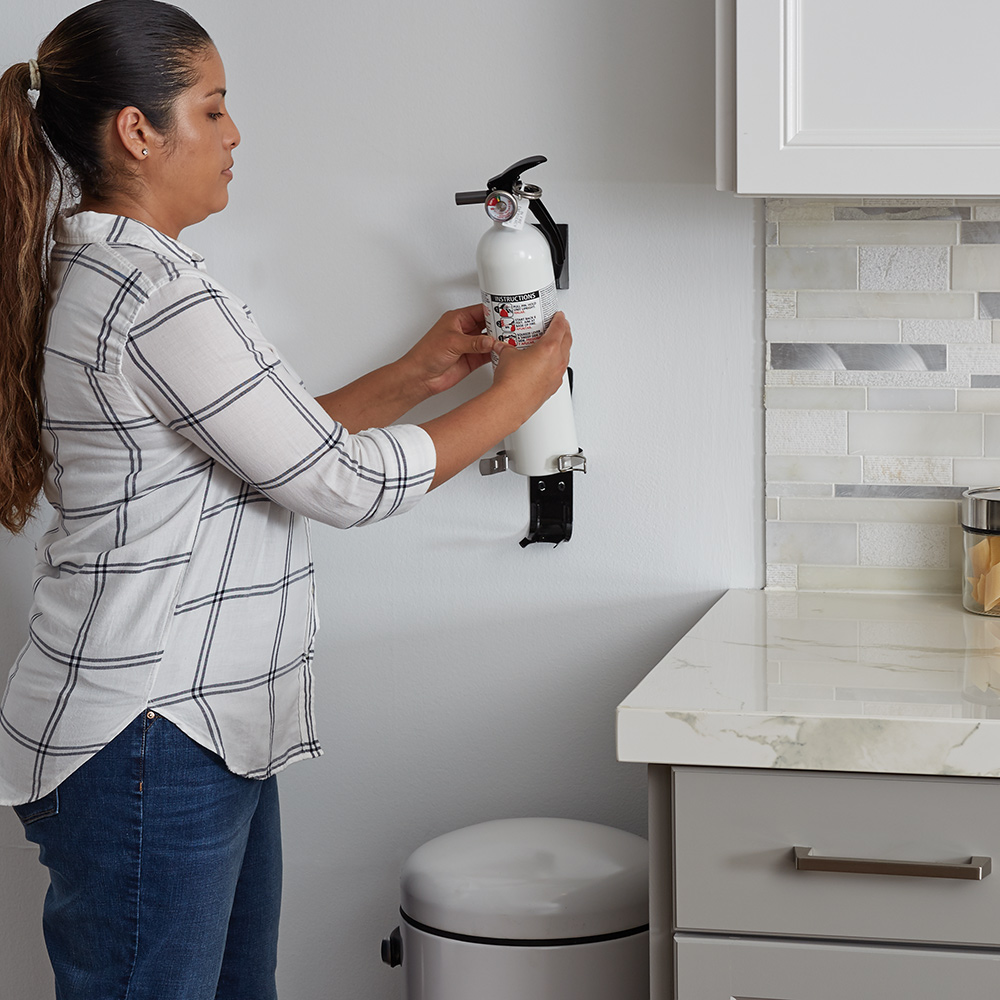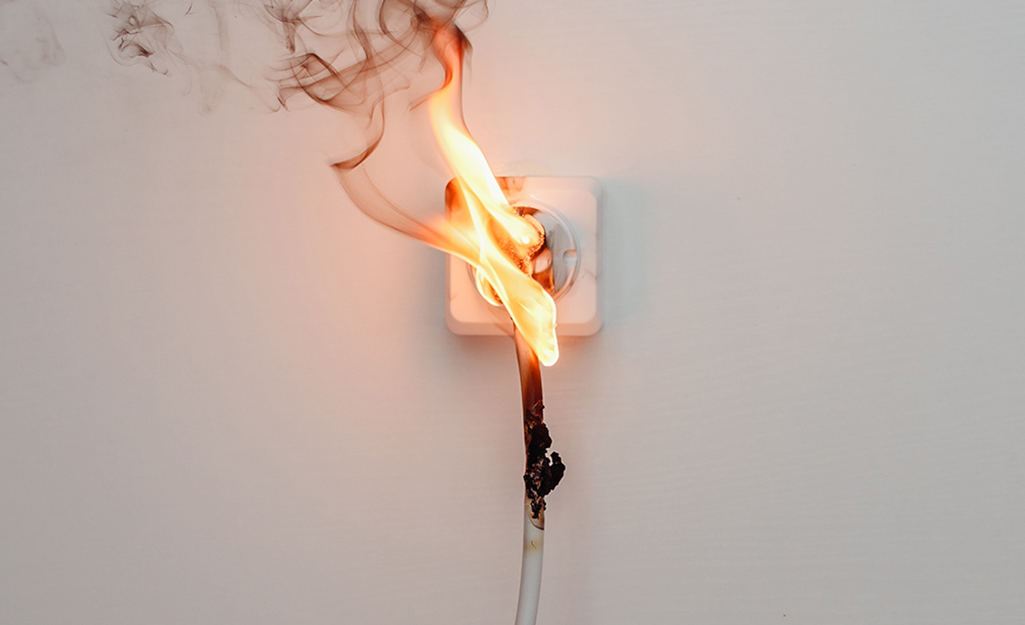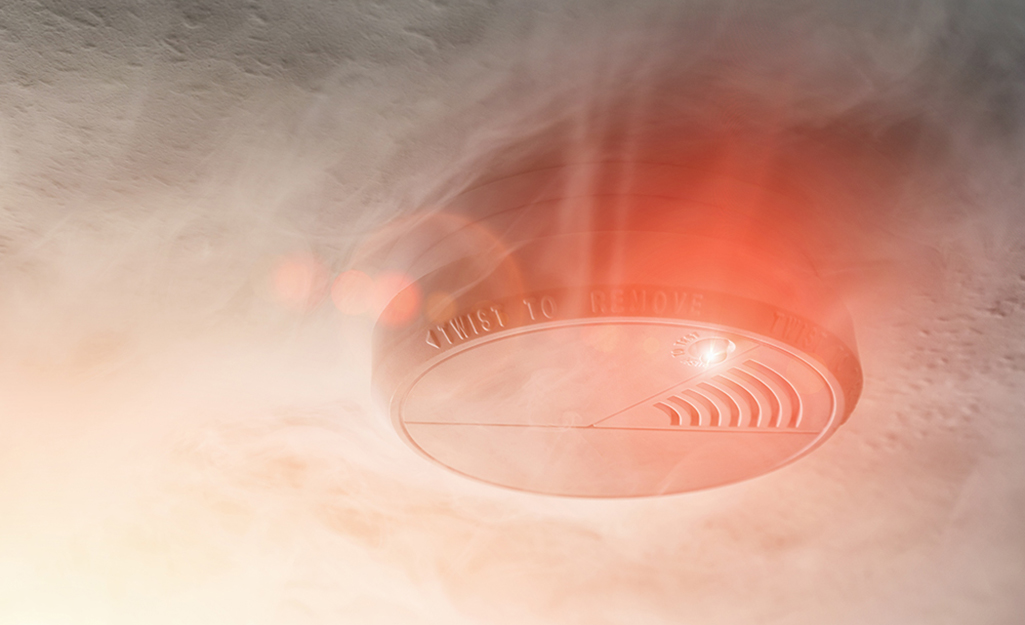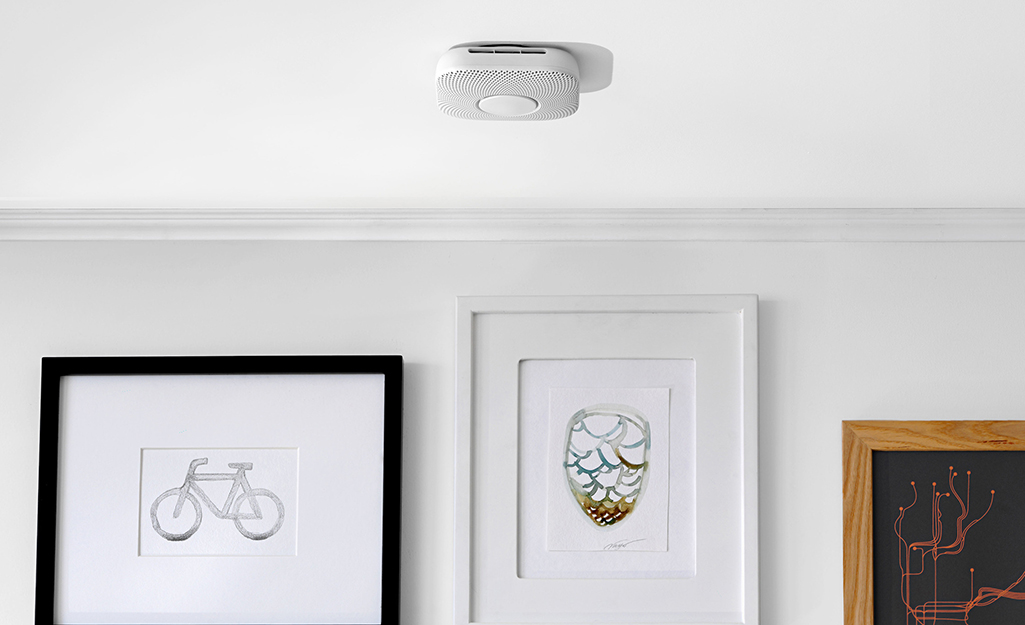How to Prevent Fires in Your Home

Last updated September 7, 2023
A fire in your home starts and spreads quickly, giving you and loved ones as little as two minutes to escape and avoid harm.
You can take steps to prevent house fires, learn fire safety and create an escape plan. In this guide, learn fire prevention tips and how to use smoke detectors, smoke alarms and carbon monoxide detectors.
Difficulty:
Beginner
Duration:
Under 2 hours
Table of Contents
Fire Safety Tips
Fire Safety Equipment
Fire Escape Plan
Fire Safety Tips

Fires can start with kitchen mishaps, electrical sparks, improperly used space heaters or even children playing with matches. Whatever the source, small flames can quickly become full-blown fires. Fires can produce toxic smoke and gases with temperatures hotter than an oven.
Follow these fire safety tips to reduce the risk of fire in your home.
- Keep space heaters on hard, level surfaces at least three feet away from flammable material. Never leave an operating space heater unattended.
- Avoid multiple appliances plugged into the same receptacle. This is an electrical fire hazard.
- Place lighted candles away from anything that could ignite if knocked over. Blow out candles when leaving the room. Better yet, use flameless candles.
- Keep a fire extinguisher in the kitchen. Make sure everyone who uses the kitchen knows how to use a fire extinguisher.
- Never leave the room when food is cooking on the stove.
- Move combustible materials like wooden utensils, dish towels and cookbooks away from the stove.
- Use a fireplace screen to keep sparks and embers from entering the room.
- Use flashlights instead of candles during power outages.
- Keep matches and lighters out of children's reach.
- Store flammable liquids in approved containers inside secure cabinets.
- Smoke outdoors, never smoke in the bedroom, and always use water to extinguish cigarettes.
- Check the condition of extension cords and the plugs on electric appliances and replace if they’re damaged.
- Avoid running extension cords underneath rugs.
- Regularly inspect the connections on all gas appliances.
- Routinely change heating and air conditioning filters.
- Inspect clothes dryer ducts to avoid lint build-up that can easily catch fire.
Fire Safety Equipment

Fire safety equipment must be properly installed and maintained for it to be effective.
Smoke alarms:
- A properly functioning smoke alarm significantly reduces the risk of death in a house fire. Battery-operated and hard-wired smoke detectors are available.
- Install alarms on each level of your home, in bedrooms and outside sleeping areas.
- Look for dual sensor smoke alarms that contain both ionization and photoelectric smoke sensors.
- Test smoke detectors monthly. Use daylight savings time weekends to install new batteries in smoke detectors.
- Replace smoke and fire alarms every 8 to 10 years.
- National Fire Protection Association standards for new home construction include hardwired smoke alarms on every level of the home, outside each sleeping area and inside each bedroom. Alarms must be wired together so that if one alarm detects smoke, all alarms sound. They must also have a battery back-up.
Fire extinguishers:
- Place fire extinguishers on each level of your home, in the kitchen and near the fireplace.
- Check the gauge on your fire extinguisher to ensure it's properly charged.
- An “A-B-C” rating indicates the device is appropriate for different types of home fires – wood, grease and electrical.
- Make sure you’re familiar with using a fire extinguisher. There is no time to read instructions during an emergency.
Carbon monoxide alarms:
- Carbon monoxide (CO) is a toxic gas found in fumes from combustible fuel. It is dangerous because it has no odor, color or taste.
- Install CO alarms at central locations on each floor of your home and outside of bedrooms.
- Never use a gasoline-powered generator or charcoal- or gas-fueled grills indoors.
- Malfunctioning or improperly installed appliances can be a source of carbon monoxide.
If carbon monoxide alarms are triggered, assume they are operating properly. You should immediately leave the house and call the fire department. Removing batteries to silence an alarm could be a dangerous mistake.
Escape ladders:
- Escape routes for fire emergencies should include two exit points. Emergency ladders can be deployed from second-story windows. Residential fire escape ladders are easy to store and should be part of an emergency home evacuation plan.
Home fire sprinkler system:
- Fire alarms can warn you of smoke in your home. They can work with sprinkler systems to suppress flames immediately. Some sprinkler systems can be connected to an alarm system that will notify the fire department even if you are not home. Suppression systems should be installed by qualified personnel following NPFA guidelines.
Fire Escape Plan

Create a home fire escape plan for your household and include two ways out of every room.
- Practice the fire drill twice a year and review tips on how to prevent fires.
- As part of the plan, one person should be designated to get infants and small children to safety. Have a back-up plan for young children in case the primary person is overcome by smoke.
- Teach children to “get low and go” if there is smoke when they are leaving the home to avoid toxic inhalation.
- Practice feeling the door, doorknob and cracks around the door with the back of your hand to see if they are too hot.
- Designate a meeting place that is a safe distance away from your home.
To stay prepared in case of a house fire, your home should have ample smoke alarms and carbon monoxide alarms installed, as well as at least one fire extinguisher stored in a convenient location. To shop home fire safety equipment, check out The Home Depot Mobile App.



























